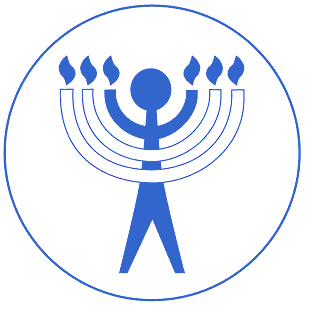The Jewish Humanist, November 1988
Brussels 1988. An important place and time for Humanistic Judaism.
The second biennial meeting of the International Federation of Secular Humanistic Jews produced an important document. The question “Who is a Jew?” was answered boldly, generously and with a unique voice. Never before had any Jewish movement drawn the parameters of Jewishness so broadly. Hopefully, the issuance of this statement to the Jewish press and to the Jewish world will challenge the traditional establishment and arouse useful discussion.
The meeting in Brussels also provided for emotional highs. Two hundred people from thirteen countries, speaking Hebrew, English, French, German, Italian, Spanish and Yiddish, created an environment of international excitement. Some came – out of secular Yiddishist backgrounds. Some came from active Zionist organizations. Some were children of the kibbutz, imbued with the results of over seventy years of humanistic experiments. Others were members of secular Jewish schools and secular Jewish culture clubs. Still others, like us, were the products of full-fledged humanistic congregations. Even famous free-floating Jewish intellectuals, like Albert Memmi and Amos Funkenstein, added to the variety of flavors.
The- main setting for the conference was the Centre Communautaire Laic Juif, a secular Jewish community center in the heart of Brussels. Established over twenty -five years ago by a charismatic couple, Simone and David Susskind, it has emerged as the major humanistic Jewish voice on the European scene. Its programs reach thousands of Jews in Brussels. Its publications, especially its French magazine Regards are read by over ten thousand Belgian Jews. Its special conferences embrace the famous leaders and intellectuals of the Jewish world and bring them together to discuss important issues.
There were many special moments. There was the triumphant conclusion of the day-long attempt to reach consensus on the Who is a Jew? statement, with regional delegations cheering and applauding-. There was the warm and inspiring message of Albert Memmi, famous writer and the honorary president of the Federation, who challenged us to respond creatively to the real world of assimilation and intermarriage. There was the simple and compelling acceptance speech of David Susskind, who received a special award for distinguished service to the cause of Jewish humanism, and who shared with us the passion of his commitment. There was the powerful challenge of Yehoshafat Harkabi, former Director of Military Intelligence for the state of Israel, who demanded that we dismiss our destructive illusions about the Israeli-Palestinian conflict and called us to confront the reality of Israel’s present position and the necessity for dramatic compromise. There was, of course, the incredible sense of solidarity and closeness as we all sang Hebrew and Yiddish songs with Jews from many places and many nations.
The conference made us an aware that, despite our differences, we were part of a growing world movement and that we needed to work together to make it strong. But we also recognized that context made a difference. The problems of North America were not the same as those of Europe. And the problems of Europe were distinct from those of Israel and Latin America. We discovered that we had to listen to each other very carefully so that we could really understand from where each one of us was coming and what each one of us needed.
Out of the conference came an agenda of tasks that we needed to undertake if we were going to be successful in serving the needs of secular and humanistic Jews. We needed to provide popular essays about our philosophy – in at least four languages – so that unaware secular Jews could identify with our ideology and our movement. We needed to strengthen our Institute in Jerusalem so that trained teachers and leaders would be available to serve struggling communities all over the world. We needed to develop the aesthetic and emotional side of our humanistic commitments so that shared celebrations and shared symbols would give us a heartfelt sense of Jewish identity. We needed to reach out to the thousands of Jews who had no knowledge of us but who belonged with us, especially the cultural Jews of the Soviet Union and the unaffiliated Jews of North America and Europe. We especially needed to map out an effective strategy to counter the militancy of the new orthodoxy and to help rescue the Jewish world for sanity and openness.
We left Brussels with the determination to undertake these tasks and with the comfort of knowing that we would undertake them together.
The closing event of the meeting was held at the Holocaust Memorial in Brussels, an outdoor shrine in the heart of the old ghetto where twenty-six thousand names of Nazi victims are inscribed in bronze. We stood in silent tribute and then sang the defiant song of the Jewish partisans. We felt the sadness and despair for all that was lost. We also felt deeply our connection to the suffering and survival of the Jewish people. We knew that, ultimately, we could not rely on the kindness of God. The future of the Jewish people and of humanity lay, in some small way, in our hands.

